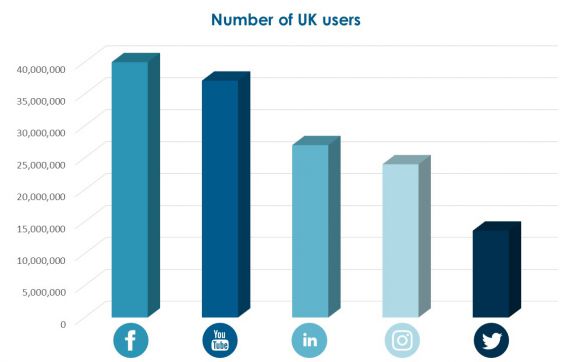Tech recruiting: How can hiring managers source top talent directly?
Author: IntaPeople | Date published: 14/05/19


Demand for tech skills continues to grow, in line with the speed of innovation. In a candidate driven market, companies are turning to new recruiting tactics and technologies to find and hire top tech talent. As a hiring manager how can you stay one step ahead in today’s competitive market? Where can you look to source tech talent directly?
 1. Stack Overflow
1. Stack Overflow
Stack Overflow claims to be the “most trusted site for developers to find, ask, and answer programming questions.” With over 50 million visitors every month you should be able to reach a vast number of candidates on this platform.
Do you have a recruitment budget?
If you answered yes, then the Stack Overflow Talent platform might be a suitable option. Stack Overflow has a tailored talent platform specifically designed to help you advertise your roles and find candidates on their database. Unfortunately, Stack Overflow keeps their pricing under wraps (until you speak to a salesperson!), but to get the full benefits of this platform you will have to pay, and it isn’t going to be what you consider to be cheap!
If you answered no, or your budget is limited you may be able to find a hidden gem of a candidate using the Stack Overflow search function. Here you can view popular questions and see who the top users are answering these. You can view user profiles, check out projects they have worked on, and see how many reputation points and badges they have earned. This gives you a really good idea of their competencies before you have even reached out to them. If you are interested in trying out this function here is a really helpful guide to get you started: How to source developers from Stack Overflow.
 2. Slack
2. Slack
Slack is a collaboration hub for work. It is essentially a chat room for your whole company, designed to replace email as your primary method of communication and file sharing. Many tech companies are using this platform to facilitate a collaborative working environment particularly for staff who may not be in the same physical location, either working remotely or from another office.
Lots of tech firms and household names are using Slack including Amazon, IBM, ITV, LinkedIn and even NASA. With all these technical candidates using Slack daily for work, it is not surprising to see local or subject-based communities have also been created (especially as Slack is free!).
Women in Tech Cymru is one example of how Slack is being used to facilitate the growth of a local tech community, here members organise meetups and chat with like-minded peers. There are many other Slack communities, you can find some here.
Slack offers a chat function allowing you to message any member directly. Obviously, it is important to be respectful of the community guidelines and not just spam every member of the group, however you may be able to reach out to someone who isn’t present on other social channels.
 3. GitHub
3. GitHub
At a high level, GitHub is a website and cloud-based service that helps developers store and manage their code, as well as track and control changes to their code. Much like Stack Overflow you can search users and view their profiles which should tell you their current employer, location, email address and personal blogs/projects/links they have chosen to display. You can also see how many other people have starred or “forked” their projects which indicates how many other developers see it as valuable.
Once you have found an email address or link to a social media profile you can craft your tailored outreach message to see if they are interested in your role. Your message is vitally important to help you stand out, the user’s contact information is publicly available for anyone who has the time and knowledge to scour the platform and consequently they may receive similar messages from other hiring managers and recruiters. For more tips on searching GitHub click here.
4. Popular social media channels
More and more people are quitting social media, either due to the lack of privacy these platforms provide or just to be more social in real life; not worrying about likes and checking for notifications. However, social media platforms are still extremely popular, and they can be a great place to find suitable tech talent.
 Which platforms are most popular?
Which platforms are most popular?
Facebook is the most popular social media platform in the UK based on the number of users, however this isn’t necessarily the best platform to approach tech talent. While you may find a candidate on Facebook, they might not be receptive to receiving a direct message from someone they don’t know as Facebook is seen to be more personal, a platform for connecting with friends and family. You could try some subtle Facebook advertising to increase awareness of your brand with potential candidates however this does cost and will also require a bit of time (or expertise) to get the most from your money.
LinkedIn is specifically intended for business networking and offers premium packages designed to make recruitment easier. For the basic Recruiter Lite package, you can pay around £80 per month for increased search and messaging functionality over and above the standard free profile. This may be suitable for you, depending on the type and number of roles you are looking to fill, however for hard-to-fill positions you may need to use the advanced recruiter features which have an increased monthly cost.
YouTube and Instagram are great platforms to showcase your company culture and employer brand. We have been using Instagram for the past year to promote #WeAreIntaPeople for our internal recruitment with great success (yes, we eat a lot of treats!). Google (Life at Google) is an example of how a tech company uses Instagram to demonstrate why you would want to join their team. Any potential candidate looking at this is bound to be impressed.
Twitter may be the smallest social channel on this list, but it can be a great place to find tech candidates who may not be active on other platforms. If you are going to use Twitter as part of your recruitment strategy it is important you have a complete profile and that you post semi-regularly to gain credibility and trust; people are unlikely to respond to a message from someone who doesn’t keep their profile current. If you want to give Twitter a try when it comes to hiring direct here is a helpful guide.
 5. Local meetups
5. Local meetups
Lots of tech candidates enjoy being part of a community and regularly attend local meetup events to help improve their knowledge base and to network with likeminded peers. There are plenty of tech meetups you can go along to for free, most of which are listed here. If you have the budget, you could increase awareness of your employer brand by sponsoring or partnering with a relevant meetup group.
 6. Leverage your networks
6. Leverage your networks
If you are looking to hire tech talent and you want to keep recruitment costs down, it makes sense to leverage the network of connections you already have access to. This means sharing the vacancy on your company website and social media channels, but also encouraging your employees to do the same.
Employee referral programs have become a popular method for finding talent directly. In return for employees using their personal network to identify potential candidates, employees usually receive some sort of incentive or reward.
Employee referrals can improve the quality of hire as staff will only recommend people who are likely to be a suitable ‘fit’ for the organisation, however, if you rely too heavily on internal recommendations you can inadvertently end up with a less diverse workforce.
Having a diverse workforce opens a wealth of possibilities, helps to encourage creativity and foster innovation. An organisation with a diverse range of employees is well placed to understand the needs of a wide range of customers and can interact with a broad client base so it is not something to ignore.
As you have read there are several ways you can source tech talent directly, whether that is on industry-specific platforms, social media or through your employee networks. You don’t have to rely on a specialist recruitment agency if you have the time and budget to commit to these options. It is important to evaluate your recruitment strategy as you go, accounting for what you spend to ensure you are making best use of your time and money. Here is a helpful tech recruitment budget spreadsheet by Stack Overflow to help you manage every pound of your recruitment spend.
In a candidate-driven market hiring top tech talent has become a bit of an art. The best way to engage passive candidates is to always be front of mind, by keeping in regular contact or interacting on social media. If candidates remember you, they will be more inclined to answer your outreach email or get in contact directly when they are open to opportunities.
For many hiring managers, all these recruitment tactics are simply unmanageable alongside day-to-day technical tasks. When time is short your recruitment suffers; complex technical problems that can’t easily be managed by junior members of staff will always be the priority.
Taking away the burden of recruitment is why many hiring managers partner with specialist agencies like IntaPeople. We can do all this for you saving you a lot of valuable time. The cost of using an agency may seem like a lot initially but when you factor in the cost of using all these platforms to their full potential and the time it takes to get results, sourcing tech talent directly may not seem as viable as you initially thought.
If you think you might need some help with your tech recruitment strategy, please get in touch for an informal conversation. We are always happy to give you advice so you can make an informed decision.
